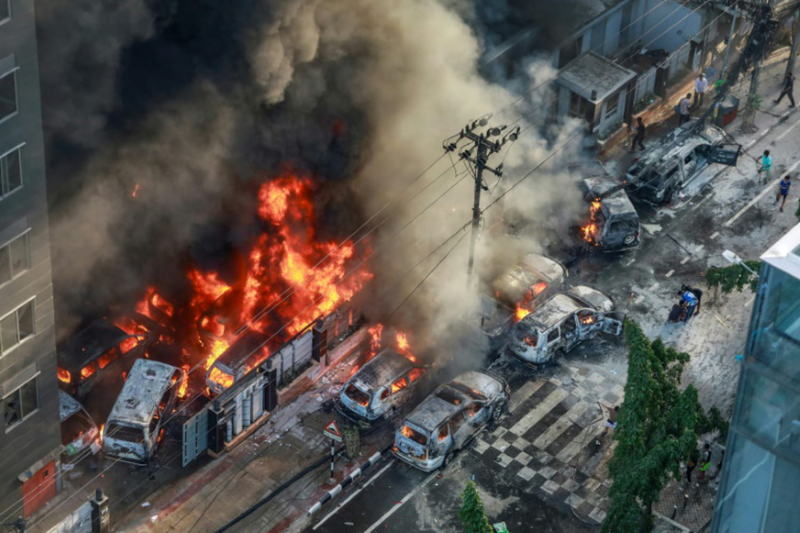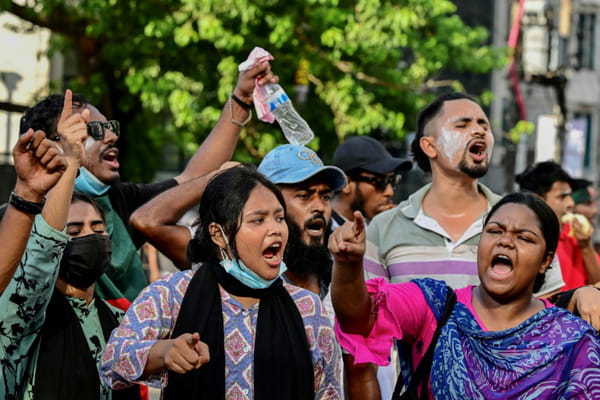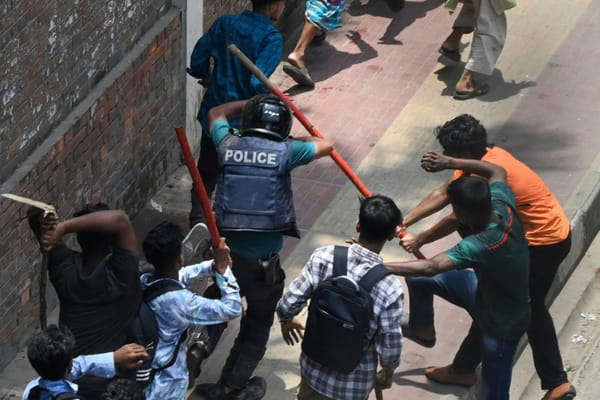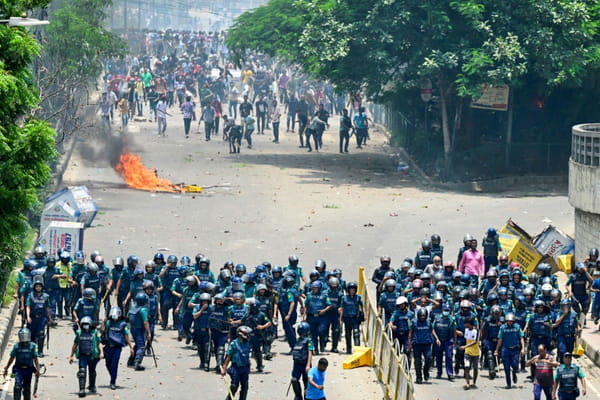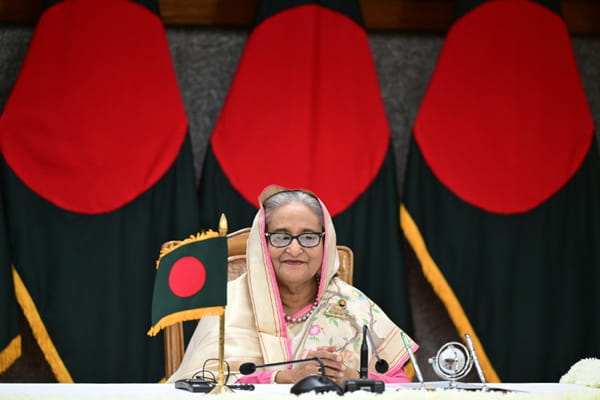Residents of Bangladesh woke up on Friday without an internet connection, discovering government buildings burned the day before, on the sidelines of clashes between police forces and students, who left 39 dead in 48 hours. Over the course of the week, the demonstrations which began at the beginning of July to demand an end to the quota system in the civil service degenerated into increasingly violent clashes, leaving 39 dead, including 32 on Thursday alone. Clashes took place in almost half of Bangladesh's 64 districts. Protesters against the quota system for public sector hiring march in Dhaka on July 18, 2024. © AFP – Munir UZ ZAMAN “Miscreants have already set fire, vandalized and carried out destructive activities” against police and government buildings, the police said in a press release, published Thursday evening, after an “almost total” cutoff of internet throughout the country. Among these buildings are that of the state television BTV in the capital Dhaka, stormed by hundreds of students who set it on fire. – 700 injured – “A hundred police officers were injured during the clashes” on Thursday, Faruk Hossain, spokesperson for the capital's police, told AFP, adding that around “fifty police stations were set on fire”. If these destructive actions continue, we will be “forced to make maximum use of the law”, the police warned in the press release. The police are at the origin of more than two thirds of the deaths recorded, according to information obtained by AFP from hospital sources. More than 700 people were injured Thursday during of these violent clashes between the police and demonstrators, including 104 police officers and 30 journalists, according to the private channel Independent Television, which said that 26 districts of the country reported clashes. Protesters beat a police officer with sticks in Dhaka, July 18, 2024 © AFP – MUNIR UZ ZAMAN The almost daily demonstrations to obtain an end to hiring quotas in the public service began at the beginning of July. This week, as the days went by, the clashes escalated, becoming more and more deadly. Prime Minister Sheikh Hasina condemned the “murder” of protesters in a televised speech on Wednesday, and promised that those responsible would be punished regardless of their political stripe. But It was not enough. Violence continued to increase, with police opening fire on increasingly determined protesters with rubber bullets and other munitions. – Prevent all communication – Clashes also broke out in several cities in Bangladesh as anti-police -riot charged the demonstrators, who had set up human blockades on roads and highways. Law enforcement officers face protesters in Dhaka, July 18, 2024 © AFP – MUNIR UZ ZAMAN Students demand merit-based civil service recruitment. They believe that the quota system aims to favor the children of supporters of Ms. Hasina, who has governed the country since 2009 and is accused by opponents of wanting to eradicate all dissent to further consolidate her power. Mubashar Hasan, an expert on this country at the University of Oslo in Norway, noted that these rallies reflected the expression of widespread discontent with the regime. Sheikh Hasina, Prime Minister of Bangladesh, during a ceremony in Dhaka, April 23, 2024 © AFP – Munir Uz Zaman The demonstrators “are protesting against the repressive nature of the State”, he explained to AFP. They “question Hasina's leadership, accusing her of clinging to power by force”, “the students actually call her a dictator”, he believes. “We first demand that the Prime Minister apologize to us,” Bidisha Rimjhim, an 18-year-old protester, told AFP. “Justice must be done for our slain brothers.” A “country-wide” internet shutdown remains in effect, the London-based advocacy organization Netblocks. “Disruptions prevent families from contacting each other and stifle efforts to document human rights abuses “, the organization wrote in a message on social networks. All rights of reproduction and representation reserved. © (2024) Agence France-Presse